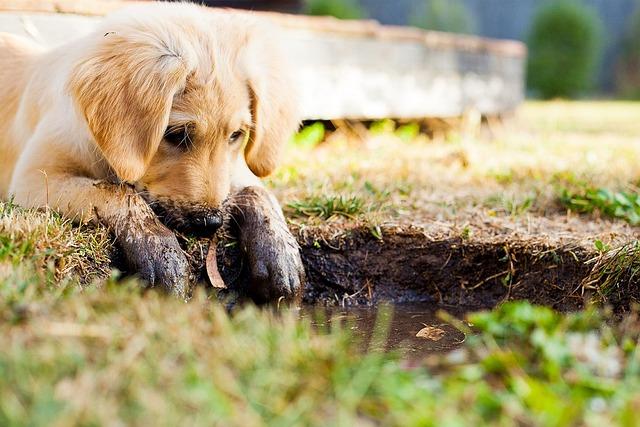Welcoming a new puppy into your home is a joyful experience, filled with playful moments and boundless affection. Yet, amidst the excitement, there comes the important task of potty training—a crucial step in ensuring a harmonious and happy household. Mastering the art of potty training your puppy requires patience, consistency, and a sprinkle of creativity. In this guide, we’ll walk you through effective strategies and heartwarming tips to make this journey as smooth and stress-free as possible. Whether you’re a first-time puppy parent or a seasoned dog lover, our warm and instructive approach will help you and your furry friend develop a routine that fits seamlessly into your lives. Let’s embark on this rewarding adventure together, transforming challenges into cherished memories.
Choosing the Right Time and Tools for Success
Timing is everything when it comes to setting your puppy up for potty training success. Consider your puppy’s age, as younger pups require more frequent bathroom breaks. Ideally, start training when you have a flexible schedule, allowing you to consistently reinforce good habits. Be patient and observant, as puppies often display signs like sniffing or circling when they need to go. Establishing a routine is key, so try to feed your puppy at the same times each day and take them outside shortly after meals. This predictability helps your puppy understand when and where they should relieve themselves.
Equipping yourself with the right tools can make the process smoother and more effective. Here are some essentials to have on hand:
- Leash and Collar: Helps guide your puppy to the designated potty area.
- Training Pads: Useful for indoor training and minimizing accidents.
- Enzyme Cleaner: Essential for cleaning up accidents without leaving a scent that might encourage repeat offenses.
- Clicker or Treats: Reinforce positive behavior immediately after successful potty breaks.
With these tools and a well-timed approach, you’ll be well on your way to mastering the art of potty training your furry friend. Remember, consistency and positive reinforcement are your best allies in this journey.
Understanding Your Puppys Behavior and Signals
Embarking on the journey of potty training requires a keen eye on your puppy’s behavior and signals. Each pup is unique, and recognizing their subtle cues can make the process smoother. Dogs communicate through body language, and understanding these signals is key to preventing accidents. Look for behaviors such as sniffing the ground, circling, or suddenly stopping play. These actions often indicate that your puppy is looking for a spot to relieve themselves.
To enhance your training, pay attention to the timing of these signals. Puppies typically need to go after eating, drinking, waking up, or playing. Consistency is crucial. When you notice the signs, gently guide your puppy to their designated potty area. Remember, positive reinforcement works wonders. Offer praise, treats, or affection when they successfully go in the right spot. Here are some common signals to watch for:
- Restlessness or pacing
- Whining or barking
- Sniffing the floor intently
- Heading towards the door
By attentively observing and responding to your puppy’s signals, you build trust and understanding, laying a strong foundation for successful potty training.
Creating a Consistent Routine with Positive Reinforcement
Establishing a regular schedule is vital in helping your puppy understand when and where it’s appropriate to go potty. Consistency is key, and with positive reinforcement, your furry friend will soon learn to associate good behavior with rewards. Begin by taking your puppy out at the same times each day: first thing in the morning, after meals, and before bedtime. Stick to these times as closely as possible to create a sense of routine.
- Praise and Treats: Each time your puppy successfully goes potty outside, shower them with praise and offer a small treat. This immediate reward system reinforces the desired behavior.
- Use a Cue Word: Choose a simple word or phrase, like “go potty,” to use consistently each time you take them outside. Over time, your puppy will associate this cue with the act of relieving themselves.
- Patience is Essential: Remember, accidents will happen. When they do, avoid scolding your puppy. Instead, calmly clean up and redirect their attention to more appropriate behavior.
Through patience and positivity, your puppy will not only learn faster but also develop a stronger bond with you. Remember, every pup is different, so adjust your routine to fit your puppy’s unique needs and progress. By creating a supportive environment, you’re setting the stage for a successful potty training journey.
Troubleshooting Common Challenges with Patience and Love
Even the most diligent puppy parents can encounter bumps along the road to successful potty training. Patience and understanding are key to overcoming these hurdles. If your puppy has frequent accidents, consider these potential reasons:
- Irregular Schedule: Puppies thrive on routine. Ensure your furry friend has a consistent feeding and potty schedule.
- Medical Issues: Sometimes accidents are a sign of underlying health problems. If issues persist, consult your veterinarian.
- Environmental Stressors: New environments or loud noises can distract or scare your puppy, making it harder for them to focus on the task at hand.
When setbacks occur, remember to approach each situation with love and compassion. A gentle tone and positive reinforcement can go a long way in encouraging your puppy to learn and adapt. Celebrate small victories, and never underestimate the power of a loving scratch behind the ears.

